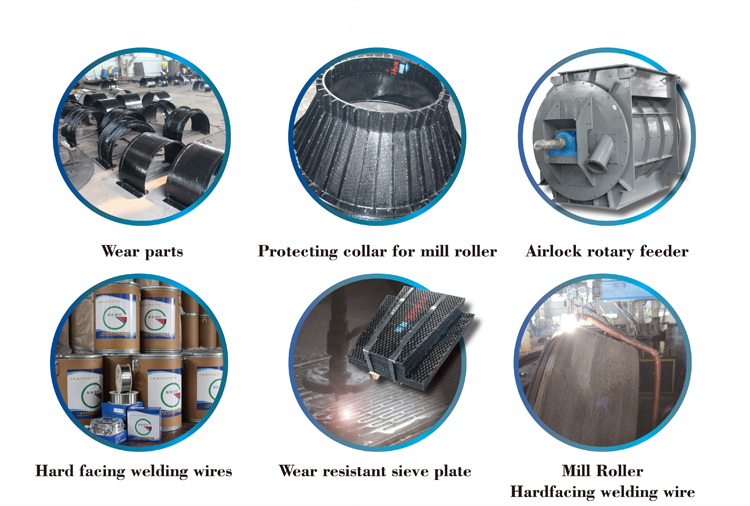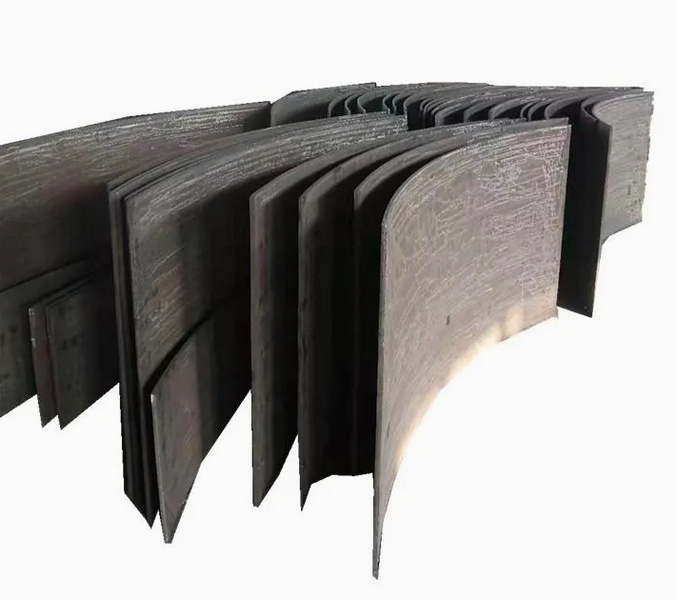Content Menu
● Understanding Wear-Resistant Materials
>> Types of Wear-Resistant Materials
● Advantages of Chromium Carbide Wear Plates
>> 1. Exceptional Hardness
>> 2. High Resistance to Erosion
>> 3. Versatility
>> 4. Cost-Effectiveness
>> 5. Easy to Fabricate
● Applications of Chromium Carbide Wear Plates
>> 1. Mining
>> 2. Construction
>> 3. Agriculture
>> 4. Cement and Concrete
>> 5. Power Generation
● Comparing Chromium Carbide Wear Plates to Other Materials
>> Hardness and Wear Resistance
>> Impact Resistance
>> Cost Considerations
>> Fabrication and Customization
>> Temperature Resistance
● The Manufacturing Process of Chromium Carbide Wear Plates
>> 1. Material Selection
>> 2. Coating Process
>> 3. Quality Control
>> 4. Finishing
>> 5. Final Inspection
● Maintenance of Chromium Carbide Wear Plates
>> 1. Regular Inspections
>> 2. Cleaning
>> 3. Monitoring Operating Conditions
>> 4. Replacement Planning
>> 5. Training Personnel
● Conclusion
● Frequently Asked Questions
>> 1. What is the primary benefit of using chromium carbide wear plates?
>> 2. How do chromium carbide wear plates compare to Hardox steel?
>> 3. Can chromium carbide wear plates be customized for specific applications?
>> 4. What industries commonly use chromium carbide wear plates?
>> 5. Are chromium carbide wear plates cost-effective?
In the world of industrial applications, wear-resistant materials play a crucial role in extending the lifespan of equipment and reducing maintenance costs. Among these materials, chromium carbide wear plates have gained significant attention due to their exceptional hardness and resistance to abrasion. This article explores how chromium carbide wear plates compare to other wear-resistant materials, their applications, benefits, and considerations for selection.
Understanding Wear-Resistant Materials
Wear-resistant materials are designed to withstand the effects of friction, erosion, and impact. They are essential in industries such as mining, construction, and manufacturing, where equipment is subjected to harsh conditions. The primary goal of these materials is to minimize wear and tear, thereby enhancing the durability and efficiency of machinery.

Types of Wear-Resistant Materials
1. Chromium Carbide Wear Plates: These plates are made by fusing chromium carbide particles onto a steel substrate. They are known for their high hardness, typically ranging from 58 to 65 HRC (Rockwell Hardness Scale), making them ideal for applications involving severe abrasion.
2. Hardox Steel: Hardox is a brand of wear plate made from high-strength steel. It offers excellent toughness and is available in various grades, making it suitable for different applications. Hardox plates are often used in construction and mining equipment.
3. Ceramic Materials: Ceramic wear materials are known for their hardness and resistance to wear. They are often used in applications where high temperatures and corrosive environments are present. However, ceramics can be brittle and may not withstand impact as well as metals.
4. Polyurethane: This flexible material is often used in applications requiring impact resistance and flexibility. Polyurethane wear liners are commonly found in chutes, hoppers, and other equipment where material flow is critical.
5. Steel Alloys: Various steel alloys are engineered to enhance wear resistance. These alloys often contain elements like manganese, nickel, and molybdenum, which improve toughness and hardness.
Advantages of Chromium Carbide Wear Plates
Chromium carbide wear plates offer several advantages over other wear-resistant materials:
1. Exceptional Hardness
The primary advantage of chromium carbide wear plates is their hardness. With a hardness rating of 58 to 65 HRC, they can withstand severe abrasion and impact, making them ideal for high-wear applications.
2. High Resistance to Erosion
These plates are highly resistant to erosion caused by abrasive materials. This property is particularly beneficial in industries such as mining and construction, where equipment is frequently exposed to harsh conditions.
3. Versatility
Chromium carbide wear plates can be used in various applications, including chutes, hoppers, and conveyor systems. Their versatility makes them suitable for different industries, from mining to agriculture.
4. Cost-Effectiveness
While the initial cost of chromium carbide wear plates may be higher than some alternatives, their durability and longevity often result in lower overall maintenance costs. This cost-effectiveness is a significant factor for businesses looking to reduce operational expenses.
5. Easy to Fabricate
Chromium carbide wear plates can be easily cut, welded, and shaped to fit specific applications. This ease of fabrication allows for customization, ensuring that the plates meet the unique requirements of different equipment.
Applications of Chromium Carbide Wear Plates
Chromium carbide wear plates are used in various industries and applications, including:
1. Mining
In the mining industry, equipment is subjected to extreme wear from abrasive materials. Chromium carbide wear plates are commonly used in draglines, shovels, and other heavy machinery to protect critical components.
2. Construction
Construction equipment, such as bulldozers and excavators, often encounters abrasive materials like soil and rock. Wear plates help extend the life of these machines, reducing downtime and maintenance costs.
3. Agriculture
In agriculture, wear plates are used in equipment like tillers and seeders, where soil abrasion can lead to significant wear. Chromium carbide plates help maintain the efficiency of these machines.
4. Cement and Concrete
The cement industry involves the handling of abrasive materials, making wear plates essential for equipment like mixers and conveyors. Chromium carbide wear plates help protect these components from wear and tear.
5. Power Generation
In power generation, wear plates are used in coal handling systems and other equipment exposed to abrasive materials. Their durability ensures efficient operation and reduced maintenance.
Comparing Chromium Carbide Wear Plates to Other Materials
When comparing chromium carbide wear plates to other wear-resistant materials, several factors come into play:
Hardness and Wear Resistance
Chromium carbide wear plates are among the hardest materials available, making them superior in applications involving severe abrasion. While materials like Hardox steel offer good toughness, they may not match the hardness of chromium carbide.
Impact Resistance
While chromium carbide plates excel in abrasion resistance, they can be more brittle than some steel alloys. In applications where impact resistance is critical, materials like Hardox or specially engineered steel alloys may be more suitable.
Cost Considerations
The initial cost of chromium carbide wear plates can be higher than alternatives like polyurethane or standard steel. However, their longevity and reduced maintenance needs often justify the investment in the long run.
Fabrication and Customization
Chromium carbide wear plates are relatively easy to fabricate, allowing for customization to fit specific applications. This flexibility is a significant advantage over some ceramic materials, which can be more challenging to work with.
Temperature Resistance
Chromium carbide wear plates can withstand high temperatures, making them suitable for applications in industries like cement and power generation. However, ceramics may outperform them in extreme heat conditions.

The Manufacturing Process of Chromium Carbide Wear Plates
The manufacturing process of chromium carbide wear plates involves several steps to ensure the final product meets the required specifications.
1. Material Selection
The first step is selecting the appropriate base material, typically a high-strength steel plate. The choice of steel affects the overall performance of the wear plate.
2. Coating Process
The chromium carbide coating is applied using a process called thermal spraying or hardfacing. In thermal spraying, chromium carbide powder is heated and sprayed onto the steel substrate, creating a strong bond. This process ensures that the wear surface is dense and uniform.
3. Quality Control
After the coating is applied, the wear plates undergo rigorous quality control tests. These tests assess the hardness, thickness, and adhesion of the coating to ensure it meets industry standards.
4. Finishing
Once the quality checks are complete, the plates are cut and shaped to fit specific applications. This finishing process may involve grinding or machining to achieve the desired dimensions.
5. Final Inspection
Before shipping, the wear plates undergo a final inspection to ensure they meet all specifications and quality standards. This step is crucial to guarantee that the plates will perform effectively in their intended applications.
Maintenance of Chromium Carbide Wear Plates
To maximize the lifespan of chromium carbide wear plates, proper maintenance is essential. Here are some best practices:
1. Regular Inspections
Conduct regular inspections to identify any signs of wear or damage. Early detection of issues can prevent more significant problems down the line.
2. Cleaning
Keep the wear plates clean to prevent the buildup of abrasive materials that can accelerate wear. Regular cleaning helps maintain the effectiveness of the plates.
3. Monitoring Operating Conditions
Monitor the operating conditions of the equipment using chromium carbide wear plates. Excessive heat or impact can lead to premature wear, so adjustments may be necessary to optimize performance.
4. Replacement Planning
Plan for the eventual replacement of wear plates. Understanding the expected lifespan of the plates can help in scheduling maintenance and minimizing downtime.
5. Training Personnel
Ensure that personnel operating equipment with wear plates are trained in proper usage and maintenance practices. This training can help extend the life of the wear plates and improve overall equipment performance.
Conclusion
Chromium carbide wear plates are a valuable asset in various industries, offering exceptional hardness, wear resistance, and versatility. While they may not be the best choice for every application, their benefits often outweigh the initial costs, making them a popular choice for businesses looking to enhance the durability of their equipment. When selecting wear-resistant materials, it is essential to consider the specific requirements of the application, including hardness, impact resistance, and cost.

Frequently Asked Questions
1. What is the primary benefit of using chromium carbide wear plates?
The primary benefit is their exceptional hardness and resistance to abrasion, making them ideal for high-wear applications.
2. How do chromium carbide wear plates compare to Hardox steel?
Chromium carbide wear plates are harder and more abrasion-resistant, while Hardox steel offers better impact resistance and toughness.
3. Can chromium carbide wear plates be customized for specific applications?
Yes, they can be easily cut, welded, and shaped to fit various equipment and applications.
4. What industries commonly use chromium carbide wear plates?
Industries such as mining, construction, agriculture, cement, and power generation commonly use these wear plates.
5. Are chromium carbide wear plates cost-effective?
While the initial cost may be higher, their durability and reduced maintenance needs often result in lower overall costs.
















